Jesse Engel
Shammie
Noise2Music: Text-conditioned Music Generation with Diffusion Models
Feb 08, 2023
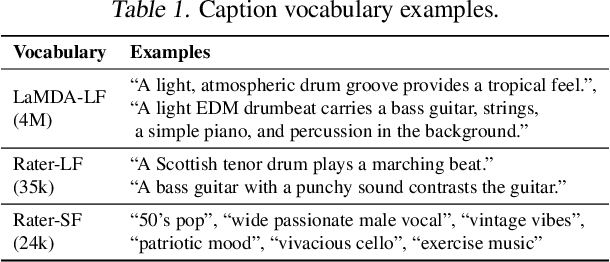

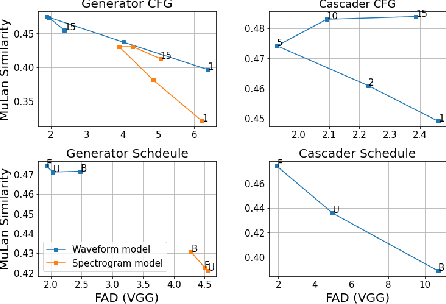
Abstract:We introduce Noise2Music, where a series of diffusion models is trained to generate high-quality 30-second music clips from text prompts. Two types of diffusion models, a generator model, which generates an intermediate representation conditioned on text, and a cascader model, which generates high-fidelity audio conditioned on the intermediate representation and possibly the text, are trained and utilized in succession to generate high-fidelity music. We explore two options for the intermediate representation, one using a spectrogram and the other using audio with lower fidelity. We find that the generated audio is not only able to faithfully reflect key elements of the text prompt such as genre, tempo, instruments, mood, and era, but goes beyond to ground fine-grained semantics of the prompt. Pretrained large language models play a key role in this story -- they are used to generate paired text for the audio of the training set and to extract embeddings of the text prompts ingested by the diffusion models. Generated examples: https://google-research.github.io/noise2music
SingSong: Generating musical accompaniments from singing
Jan 30, 2023
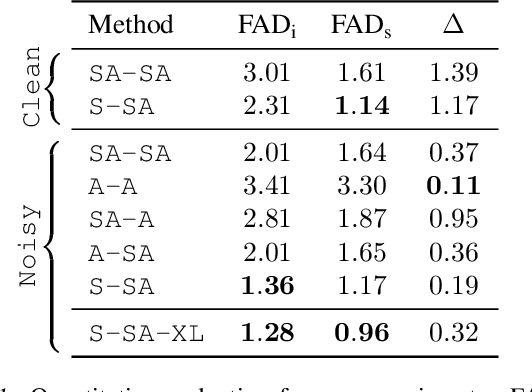

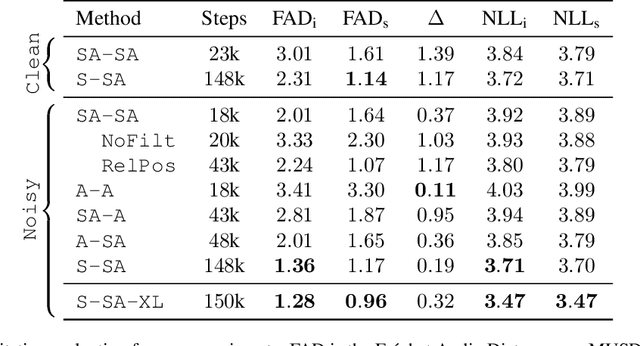
Abstract:We present SingSong, a system that generates instrumental music to accompany input vocals, potentially offering musicians and non-musicians alike an intuitive new way to create music featuring their own voice. To accomplish this, we build on recent developments in musical source separation and audio generation. Specifically, we apply a state-of-the-art source separation algorithm to a large corpus of music audio to produce aligned pairs of vocals and instrumental sources. Then, we adapt AudioLM (Borsos et al., 2022) -- a state-of-the-art approach for unconditional audio generation -- to be suitable for conditional "audio-to-audio" generation tasks, and train it on the source-separated (vocal, instrumental) pairs. In a pairwise comparison with the same vocal inputs, listeners expressed a significant preference for instrumentals generated by SingSong compared to those from a strong retrieval baseline. Sound examples at https://g.co/magenta/singsong
MusicLM: Generating Music From Text
Jan 26, 2023



Abstract:We introduce MusicLM, a model generating high-fidelity music from text descriptions such as "a calming violin melody backed by a distorted guitar riff". MusicLM casts the process of conditional music generation as a hierarchical sequence-to-sequence modeling task, and it generates music at 24 kHz that remains consistent over several minutes. Our experiments show that MusicLM outperforms previous systems both in audio quality and adherence to the text description. Moreover, we demonstrate that MusicLM can be conditioned on both text and a melody in that it can transform whistled and hummed melodies according to the style described in a text caption. To support future research, we publicly release MusicCaps, a dataset composed of 5.5k music-text pairs, with rich text descriptions provided by human experts.
The Chamber Ensemble Generator: Limitless High-Quality MIR Data via Generative Modeling
Sep 28, 2022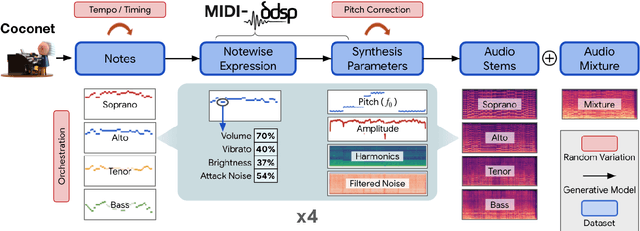
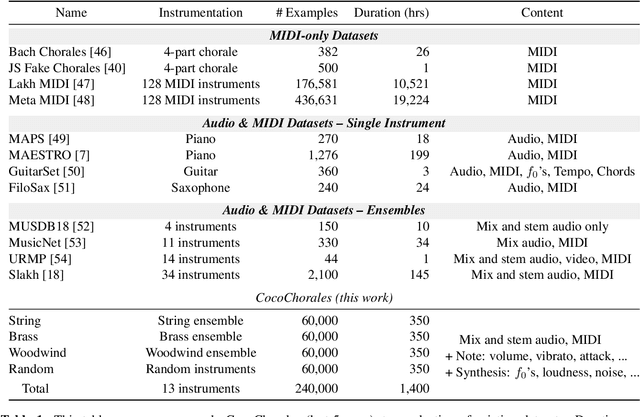
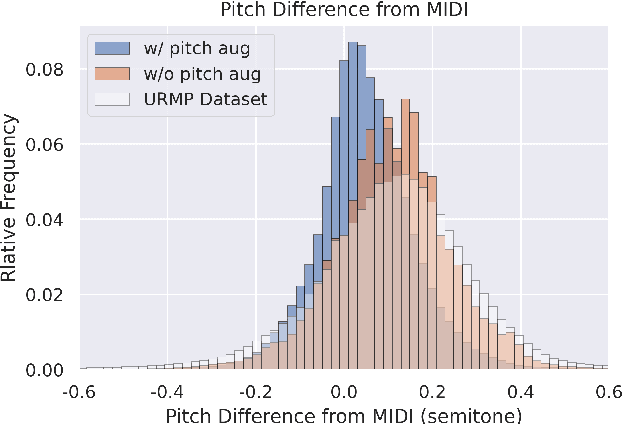

Abstract:Data is the lifeblood of modern machine learning systems, including for those in Music Information Retrieval (MIR). However, MIR has long been mired by small datasets and unreliable labels. In this work, we propose to break this bottleneck using generative modeling. By pipelining a generative model of notes (Coconet trained on Bach Chorales) with a structured synthesis model of chamber ensembles (MIDI-DDSP trained on URMP), we demonstrate a system capable of producing unlimited amounts of realistic chorale music with rich annotations including mixes, stems, MIDI, note-level performance attributes (staccato, vibrato, etc.), and even fine-grained synthesis parameters (pitch, amplitude, etc.). We call this system the Chamber Ensemble Generator (CEG), and use it to generate a large dataset of chorales from four different chamber ensembles (CocoChorales). We demonstrate that data generated using our approach improves state-of-the-art models for music transcription and source separation, and we release both the system and the dataset as an open-source foundation for future work in the MIR community.
Multi-instrument Music Synthesis with Spectrogram Diffusion
Jun 11, 2022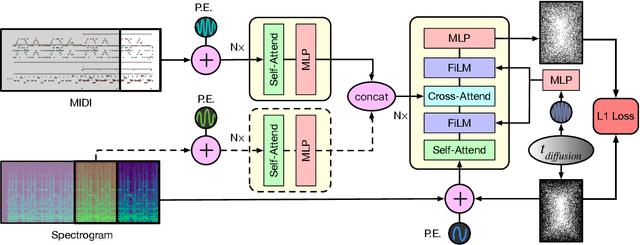


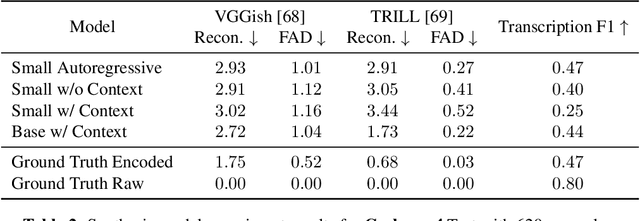
Abstract:An ideal music synthesizer should be both interactive and expressive, generating high-fidelity audio in realtime for arbitrary combinations of instruments and notes. Recent neural synthesizers have exhibited a tradeoff between domain-specific models that offer detailed control of only specific instruments, or raw waveform models that can train on all of music but with minimal control and slow generation. In this work, we focus on a middle ground of neural synthesizers that can generate audio from MIDI sequences with arbitrary combinations of instruments in realtime. This enables training on a wide range of transcription datasets with a single model, which in turn offers note-level control of composition and instrumentation across a wide range of instruments. We use a simple two-stage process: MIDI to spectrograms with an encoder-decoder Transformer, then spectrograms to audio with a generative adversarial network (GAN) spectrogram inverter. We compare training the decoder as an autoregressive model and as a Denoising Diffusion Probabilistic Model (DDPM) and find that the DDPM approach is superior both qualitatively and as measured by audio reconstruction and Fr\'echet distance metrics. Given the interactivity and generality of this approach, we find this to be a promising first step towards interactive and expressive neural synthesis for arbitrary combinations of instruments and notes.
Beyond the Imitation Game: Quantifying and extrapolating the capabilities of language models
Jun 10, 2022Abstract:Language models demonstrate both quantitative improvement and new qualitative capabilities with increasing scale. Despite their potentially transformative impact, these new capabilities are as yet poorly characterized. In order to inform future research, prepare for disruptive new model capabilities, and ameliorate socially harmful effects, it is vital that we understand the present and near-future capabilities and limitations of language models. To address this challenge, we introduce the Beyond the Imitation Game benchmark (BIG-bench). BIG-bench currently consists of 204 tasks, contributed by 442 authors across 132 institutions. Task topics are diverse, drawing problems from linguistics, childhood development, math, common-sense reasoning, biology, physics, social bias, software development, and beyond. BIG-bench focuses on tasks that are believed to be beyond the capabilities of current language models. We evaluate the behavior of OpenAI's GPT models, Google-internal dense transformer architectures, and Switch-style sparse transformers on BIG-bench, across model sizes spanning millions to hundreds of billions of parameters. In addition, a team of human expert raters performed all tasks in order to provide a strong baseline. Findings include: model performance and calibration both improve with scale, but are poor in absolute terms (and when compared with rater performance); performance is remarkably similar across model classes, though with benefits from sparsity; tasks that improve gradually and predictably commonly involve a large knowledge or memorization component, whereas tasks that exhibit "breakthrough" behavior at a critical scale often involve multiple steps or components, or brittle metrics; social bias typically increases with scale in settings with ambiguous context, but this can be improved with prompting.
Improving Source Separation by Explicitly Modeling Dependencies Between Sources
Mar 28, 2022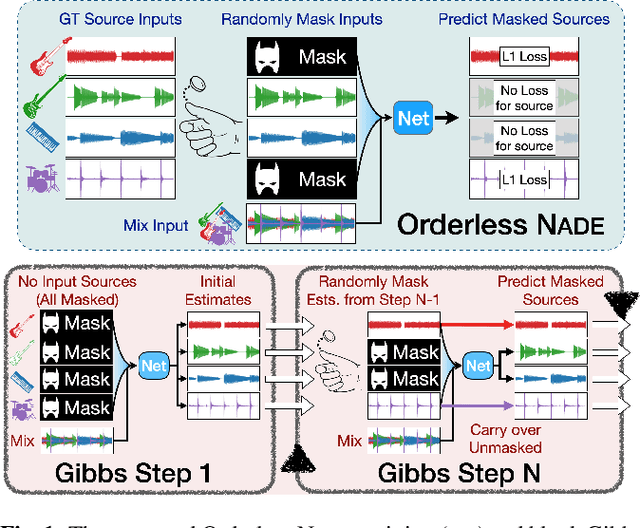
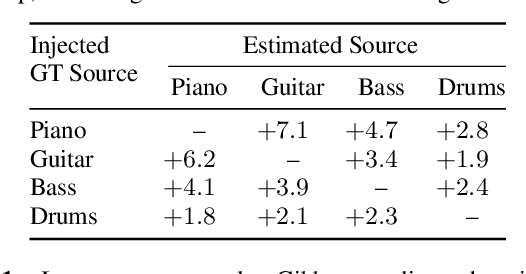
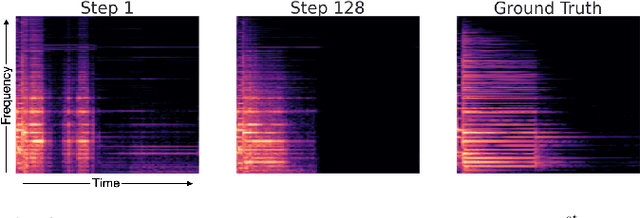
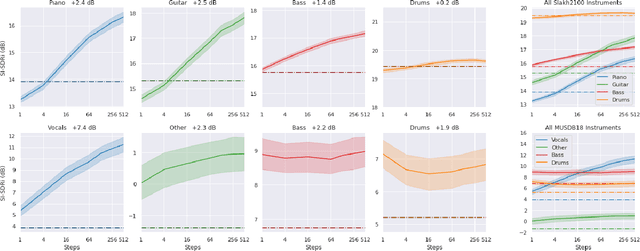
Abstract:We propose a new method for training a supervised source separation system that aims to learn the interdependent relationships between all combinations of sources in a mixture. Rather than independently estimating each source from a mix, we reframe the source separation problem as an Orderless Neural Autoregressive Density Estimator (NADE), and estimate each source from both the mix and a random subset of the other sources. We adapt a standard source separation architecture, Demucs, with additional inputs for each individual source, in addition to the input mixture. We randomly mask these input sources during training so that the network learns the conditional dependencies between the sources. By pairing this training method with a block Gibbs sampling procedure at inference time, we demonstrate that the network can iteratively improve its separation performance by conditioning a source estimate on its earlier source estimates. Experiments on two source separation datasets show that training a Demucs model with an Orderless NADE approach and using Gibbs sampling (up to 512 steps) at inference time strongly outperforms a Demucs baseline that uses a standard regression loss and direct (one step) estimation of sources.
HEAR 2021: Holistic Evaluation of Audio Representations
Mar 26, 2022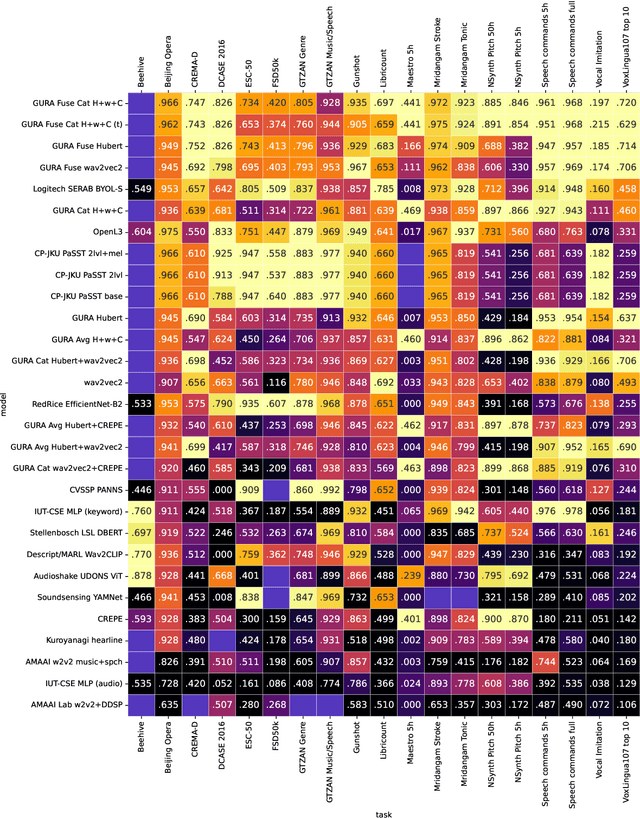
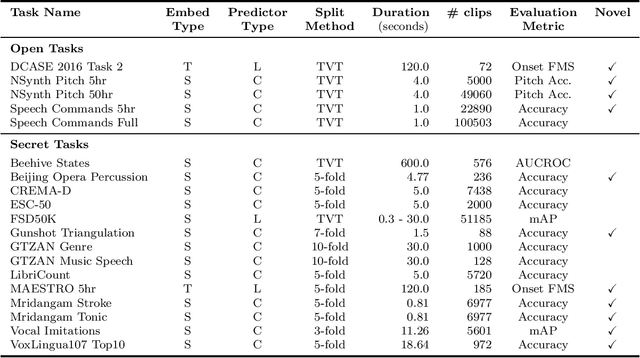

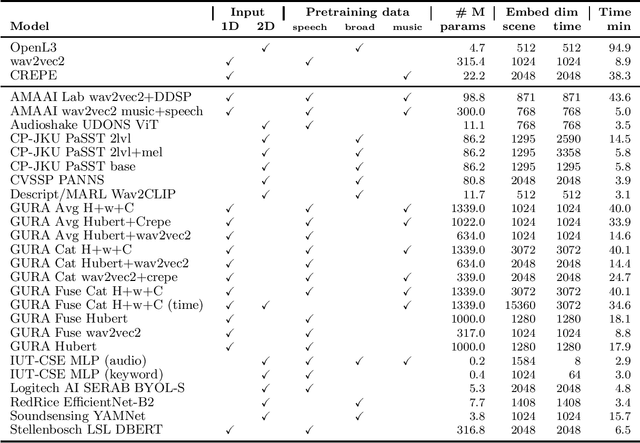
Abstract:What audio embedding approach generalizes best to a wide range of downstream tasks across a variety of everyday domains without fine-tuning? The aim of the HEAR 2021 NeurIPS challenge is to develop a general-purpose audio representation that provides a strong basis for learning in a wide variety of tasks and scenarios. HEAR 2021 evaluates audio representations using a benchmark suite across a variety of domains, including speech, environmental sound, and music. In the spirit of shared exchange, each participant submitted an audio embedding model following a common API that is general-purpose, open-source, and freely available to use. Twenty-nine models by thirteen external teams were evaluated on nineteen diverse downstream tasks derived from sixteen datasets. Open evaluation code, submitted models and datasets are key contributions, enabling comprehensive and reproducible evaluation, as well as previously impossible longitudinal studies. It still remains an open question whether one single general-purpose audio representation can perform as holistically as the human ear.
General-purpose, long-context autoregressive modeling with Perceiver AR
Feb 15, 2022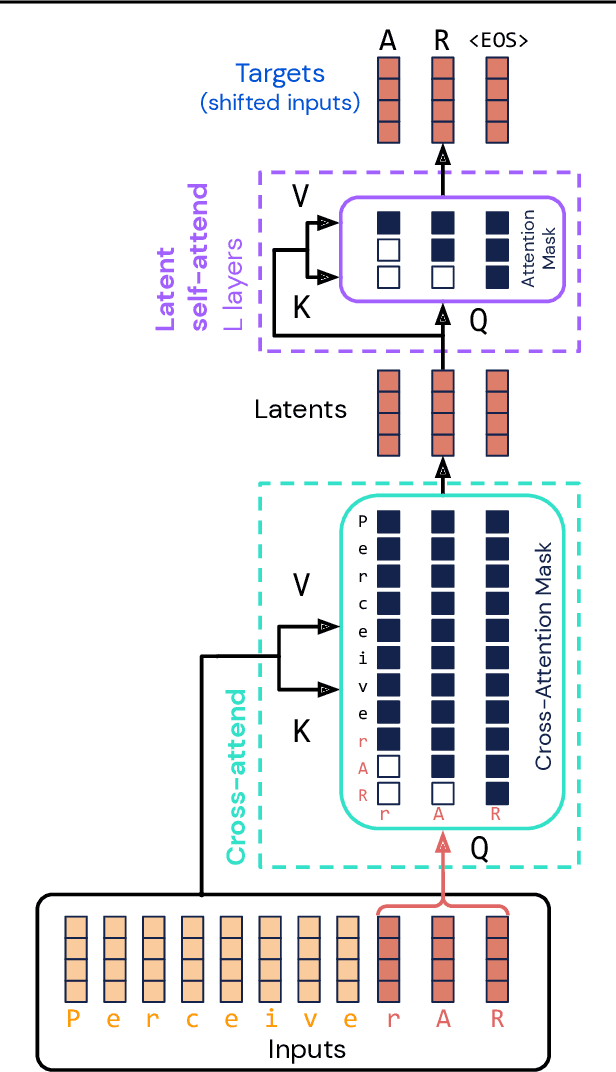
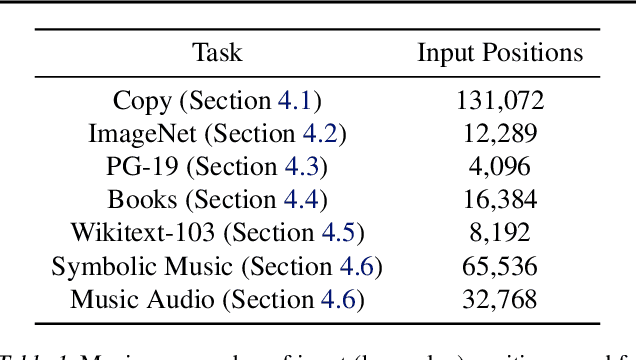
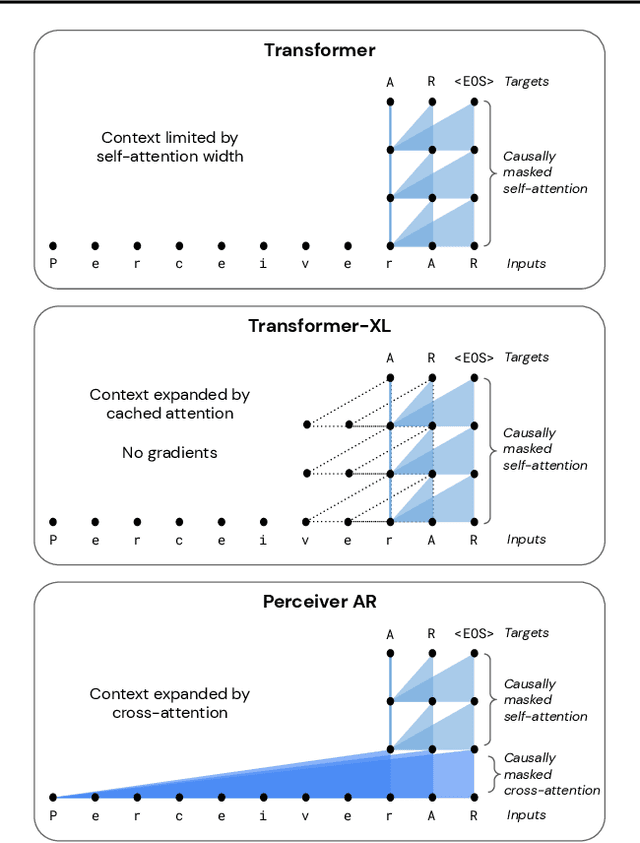

Abstract:Real-world data is high-dimensional: a book, image, or musical performance can easily contain hundreds of thousands of elements even after compression. However, the most commonly used autoregressive models, Transformers, are prohibitively expensive to scale to the number of inputs and layers needed to capture this long-range structure. We develop Perceiver AR, an autoregressive, modality-agnostic architecture which uses cross-attention to map long-range inputs to a small number of latents while also maintaining end-to-end causal masking. Perceiver AR can directly attend to over a hundred thousand tokens, enabling practical long-context density estimation without the need for hand-crafted sparsity patterns or memory mechanisms. When trained on images or music, Perceiver AR generates outputs with clear long-term coherence and structure. Our architecture also obtains state-of-the-art likelihood on long-sequence benchmarks, including 64 x 64 ImageNet images and PG-19 books.
MIDI-DDSP: Detailed Control of Musical Performance via Hierarchical Modeling
Dec 17, 2021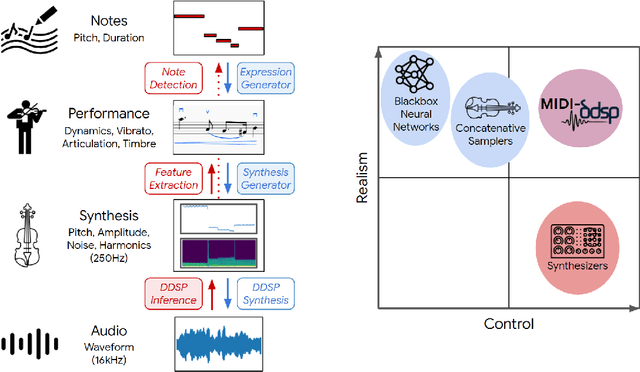
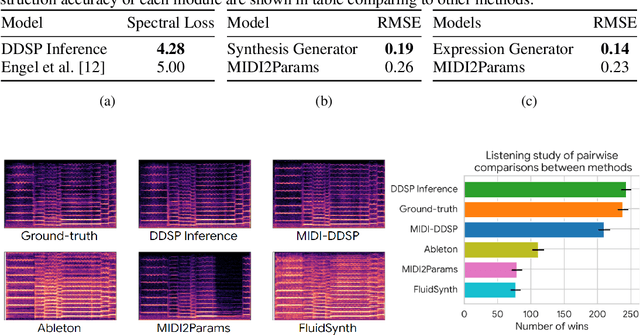
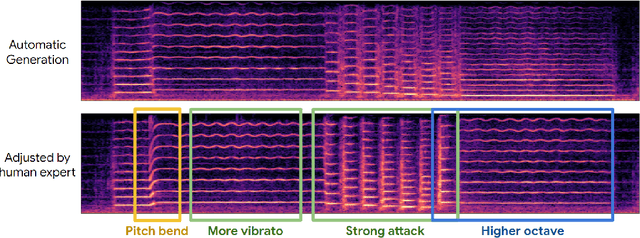

Abstract:Musical expression requires control of both what notes are played, and how they are performed. Conventional audio synthesizers provide detailed expressive controls, but at the cost of realism. Black-box neural audio synthesis and concatenative samplers can produce realistic audio, but have few mechanisms for control. In this work, we introduce MIDI-DDSP a hierarchical model of musical instruments that enables both realistic neural audio synthesis and detailed user control. Starting from interpretable Differentiable Digital Signal Processing (DDSP) synthesis parameters, we infer musical notes and high-level properties of their expressive performance (such as timbre, vibrato, dynamics, and articulation). This creates a 3-level hierarchy (notes, performance, synthesis) that affords individuals the option to intervene at each level, or utilize trained priors (performance given notes, synthesis given performance) for creative assistance. Through quantitative experiments and listening tests, we demonstrate that this hierarchy can reconstruct high-fidelity audio, accurately predict performance attributes for a note sequence, independently manipulate the attributes of a given performance, and as a complete system, generate realistic audio from a novel note sequence. By utilizing an interpretable hierarchy, with multiple levels of granularity, MIDI-DDSP opens the door to assistive tools to empower individuals across a diverse range of musical experience.
 Add to Chrome
Add to Chrome Add to Firefox
Add to Firefox Add to Edge
Add to Edge